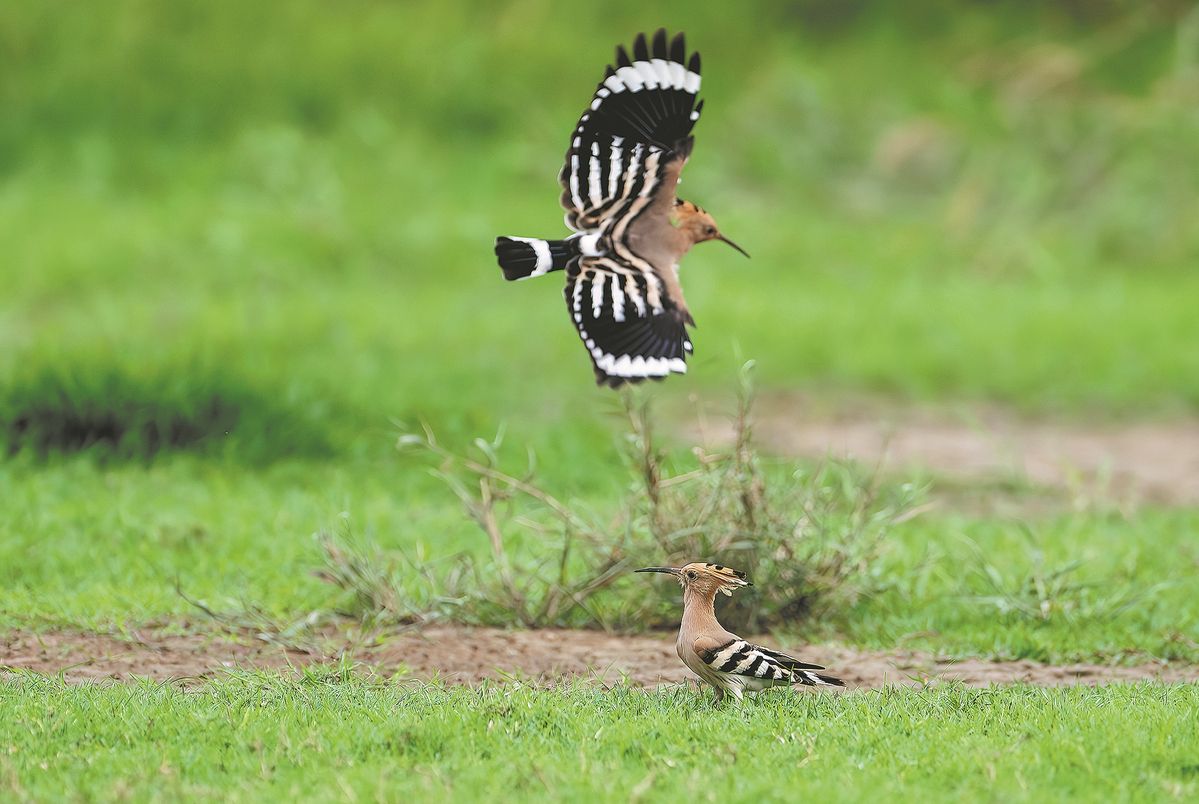source: editor:Zhang Wenni
 Hoopoes arrive to spend winter in Fuzhou, Fujian province. WEI PEIQUAN/XINHUA
Hoopoes arrive to spend winter in Fuzhou, Fujian province. WEI PEIQUAN/XINHUA
Severe drought
In 2022, Poyang Lake in Jiangxi province, China's largest freshwater lake, experienced a prolonged drought and food shortages that jeopardized the wintering grounds of numerous waterfowl species, including swans, geese and ducks. That year, the lake entered its dry season 100 days earlier than when records were first taken in 1951, setting a historically low water level.
The drought, a rare occurrence during the summer, had devastating effects on submerged vegetation, which is essential for wintering waterfowl.
Jin Jiefeng, a Yangtze River program director at the International Crane Foundation, told China Dialogue Ocean that although they may not necessarily alter the migratory routes of the birds, changes in the timing of migration due to insufficient food supplies could impact their breeding cycles and overall population development.
China Dialogue Ocean is a platform dedicated to highlighting, analyzing and helping to resolve the ocean crisis.
A study by US researchers published in the journal Nature Climate Change in 2019 suggested that compared to 20 years ago, migratory birds are passing certain sites earlier in spring, possibly due to rising temperatures. In spring and autumn, warmer seasons indicate earlier peak migration dates.
Not only has the timing of migration altered, but due to factors such as climate change, so too has the distribution range of some avian species.
Jia Yifei, associate professor at Beijing Forestry University's School of Ecology and Nature Conservation, said winter habitats have expanded northward, as more migratory birds such as red-crowned cranes spend this season in Shandong province, which is further north than Jiangsu province, a traditional winter habitat for the species.
The Yellow River Delta, a vital wetland for migratory birds, has seen a rise in the number of winter arrivals.
Since 2020, the number of avian species at the delta's nature reserve has risen from 187 to 373. A total of 389 red-crowned cranes were sighted at the reserve in January last year, up from 306 in January 2022.
Jia said: "The increasing frequency of extreme weather events globally due to climate change affects migratory routes and habitats. However, climate change is just one of the factors, and it is hard to gauge how much climate affects avian migration."
In 2021, Chinese researchers wrote in an essay published in the journal Ecological Indicators that migratory birds will change their habitats and growth cycle in response to climate change. The direction and distance flown are different for every species.